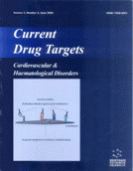Abstract
Complex blood flow dynamics are thought to play a key role in the development and treatment of atherosclerosis; however, the exact nature of this role is incompletely understood owing to the practical difficulties associated with measuring important local hemodynamic factors, notably wall shear stresses, in vivo. Only recently has it become possible to consider mapping these hemodynamic factors in a prospective, patient-specific manner via the coupling of in vivo medical imaging and computational fluid dynamics (CFD) modelling. CFD models derived from intravascular ultrasound have already been used to elucidate the role that hemodynamic forces play in mechanical and pharmacological interventions for coronary atherosclerosis. CFD models derived from magnetic resonance imaging and three-dimensional ultrasound provide a less invasive window into more superficial vessels such as the carotid bifurcation, and thus are promising tools for clarifying the role of, and eventually exploiting, purported local geometric and hemodynamic risk factors for atherosclerosis and its response to therapeutic options. Efforts to improve the ease and robustness with which these models are constructed have led to concomitant improvements in accuracy and precision, data for which are presented to facilitate estimation of sample sizes for future studies. Current limitations and anticipated future directions for these powerful new tools are discussed.
Keywords: hemodynamics, atherosclerosis, hemodynamic factors, computational fluid dynamics, coronary atherosclerosis, magnetic resonance imaging
 5
5













